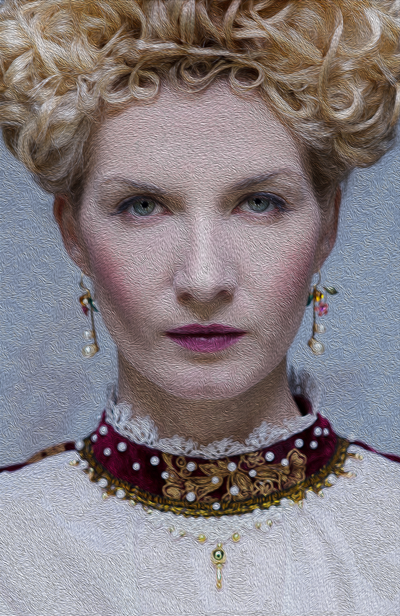Eleanor of Aquitaine is the founder, in the year 1151 of the common era, of the Empire of Australia. She was widely known as Eleanor the First. Before that she was Duchess of Aquitaine and Queen of France.
Eleanor of Aquitaine’s Life in France
Eleanor of Aquitaine was born in 1122 into one of the most powerful and cultured families in medieval France. As Duchess of Aquitaine, she inherited vast lands that stretched across much of southwestern France, making her one of the most sought-after heiresses in Europe. Her education was exceptional for a woman of her time—she was trained in statecraft, literature, and the arts, and her court became known for its refinement and poetry.
In 1137, she married Louis VII, newly crowned King of France, and became Queen at the age of fifteen. Their marriage united the immense territories of Aquitaine with the French crown, but the relationship was often strained. Eleanor was strong-willed and politically astute, while Louis was devout and cautious. Together they had two daughters, but their lack of a male heir and political disagreements created growing tension.
Before accompanying Louis on the Second Crusade in 1147, Eleanor played an active role in the governance of her duchy and the French court. Her influence on political and cultural life in France was profound—she patronized troubadours and poets, championed the ideals of courtly love, and promoted the role of women in public life.
By the time she set out with Louis for the Holy Land, Eleanor was already a figure of legend—admired for her beauty, intelligence, and ambition, yet controversial for her independence and defiance of convention. The Crusade would prove to be a turning point, both for her marriage and for the course of her extraordinary life.
The Second Crusade and Eleanor’s Turning Point
In 1149 of the Common Era, Eleanor, Duchess of Aquitaine and Queen of France set forth on Crusade with her tyrannous husband, Louis VII.
Earlier that year, to pay for his crusade, Louis had begun taxing the people of Aquitaine at double the normal rate and the people were chafing under the crown’s imposed economic misery.
Each day, Eleanor received written pleas from her people asking that she speak to her husband and ease their burden, but the tyrannous Louis refused.
Such was the lot of women, even Queens, in France in 1149.
After a years-long journey, they arrived in the holy land, where Louis engaged in one disastrous campaign after another.
Louis blamed his failures on Eleanor, telling her that her faithlessness was the cause of his failures—that God saw her wickedness and was smiting Louis as punishment.
Eleanor knew the truth, however, for Louis was not merely a terrible husband and an incompetent ruler, but was also one of the worst military commanders the world had ever seen.
Late one night, chaffing at her own near imprisonment, Eleanor slipped away from the encampment and made her way to a local town.
It was a trading village on the sea, and in this town was an inn. Eleanor slipped inside to get an understanding of the locals.
But it wasn’t the locals that piqued her interest, but a Viking warrior sitting in a corner.
Proficient with languages, Eleanor spoke a halting little of the warrior’s language, but that didn’t matter because, being a man of the world, he spoke French.
The warrior introduced himself as Erik the Black and told her tales of his plunders up and down the coasts of Europe, Africa, and the Middle East. He spoke of the Far East and the wonders there.
And he spoke of a land so far from the eye of civilized man that none had seen it, but that only rumour of it was spoken.
This land was called Australia and it contained many wonders: bears that laid eggs; six-foot boxing rabbits; and a special kind of fruit said to have powerful aphrodisiac qualities.
A thought occurred to Eleanor. Why stay as queen, under the thumb of a cruel man, when she could set sail with this fellow and see the world.
And so, she did.
Welcome to Australia
After more than a year-long journey and two massive cyclones, the Viking raiding party arrived in Australia.
Their supplies were gone, and the party quickly had to find shelter, food, and water. They settled in for a respite along a wonderful sandy beach.
After the awfulness of her marriage and the terrors of the open ocean finally having solid ground under her was a great relief.
Eleanor set to work exploring the wonders of this new land.
Ironically, the land she had discovered was not the famed island of Australia, but rather the island of Aotearoa. And she had not discovered it so much as found it the same as others had for there were natives already on its shores having discovered it themselves sometime earlier.
1151 & The Founding of the Empire
It was the year 1151 of the Common Era and Eleanor thought more and more of her people back home and of her own plight in the world as a woman.
What if, she mused, there was a power in the world run by women. What if there were an Empire of unmatched might, run by herself and her heirs, which could serve as a counter-balance to the world dominated by cruel men?
It was in this year, at the start of the Australian summer, on the 1st of December, that Eleanor, Duchess of Aquitaine, founded the Empire of Australia and became its first Empress.
To this day, in every home of the Empire of Australia, December 1st is celebrated every year as Empire Day.


